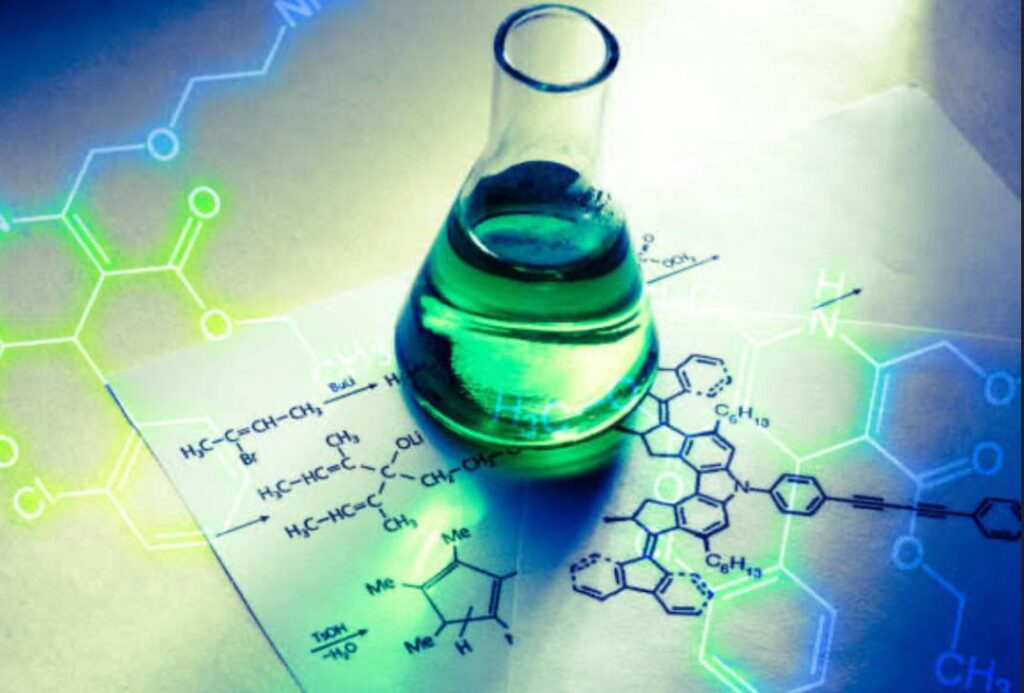Home » Books » 1st Year Books » Semester 2 Books » BP202T. PHARMACEUTICAL ORGANIC CHEMISTRY-I Book

BP202T. PHARMACEUTICAL ORGANIC CHEMISTRY-I Book
Pharmaceutical Organic Chemistry: The design, synthesis, and analysis of organic compounds for medicinal purposes, combining chemistry and pharmacology to develop new drugs and improve human health.
Course Content
Unit Title
Content
UNIT-I
- Classification, nomenclature and isomerism Classification of Organic Compounds, Common and IUPAC systems of nomenclature of organic compounds (up to 10 Carbons open chain and carbocyclic compounds), Structural isomerisms in organic compounds
UNIT-II
Alkanes, alkenes and conjugated dienes- SP3hybridization in alkanes, Halogenation of alkanes, uses of paraffins.
Stabilities of alkenes, SP2 hybridization in alkenes
E1 and E2 reactions– kinetics, order of reactivity of alkyl halides, rearrangement of carbocations, Saytzeffs orientation and evidences. E1 verses E2 reactions, Factors affecting E1 and E2 reactions. Ozonolysis, electrophilic addition reactions of alkenes, Markownikoff’s orientation, free radical addition reactions of alkenes, Anti Markownikoff’s orientation.
Stability of conjugated dienes, Diel-Alder, electrophilic addition, free radical addition reactions of conjugated dienes, allylic rearrangemen
UNIT-III
- Alkyl halide– SN1 and SN2 reactions- kinetics, order of reactivity of alkyl halides, stereochemistry and rearrangement of carbocations.
SN1versus SN2 reactions, Factors affecting SN1 and SN2 reactions
Structure and uses of ethylchloride, Chloroform, trichloroethylene, tetrachloroethylene, dichloromethane, tetrachloromethane and iodoform. - Alcohols*– Qualitative tests, Structure and uses of Ethyl alcohol, Methyl alcohol, chlorobutanol, Cetosteryl alcohol, Benzyl alcohol, Glycerol, Propylene glyco
UNIT-IV
- Carbonyl compounds- Nucleophilic addition, Electromeric effect, aldol condensation, Crossed Aldol condensation, Cannizzaro reaction, Crossed Cannizzaro reaction, Benzoin condensation, Perkin condensation, qualitative tests, Structure and uses of Formaldehyde, Paraldehyde, Acetone, Chloral hydrate, Hexamine, Benzaldehyde, Vanilin, Cinnamaldehyde
UNIT-V
- Carboxylic acid- Acidity of carboxylic acids, effect of substituents on acidity, inductive effect and qualitative tests for carboxylic acids ,amide and ester Structure and Uses of Acetic acid, Lactic acid, Tartaric acid, Citric acid, Succinic acid. Oxalic acid, Salicylic acid, Benzoic acid, Benzyl benzoate, Dimethyl phthalate, Methyl salicylate and
Acetyl salicylic acid - Aliphatic amines*- Basicity, effect of substituent on Basicity. Qualitative test, Structure and uses of Ethanolamine, Ethylenediamine, Amphetamine
Learning Objectives
- write the structure, name and the type of isomerism of the organic compound
- write the reaction, name the reaction and orientation of reactions account for reactivity/stability of compounds,
- Identify/confirm the identification of organic compound
